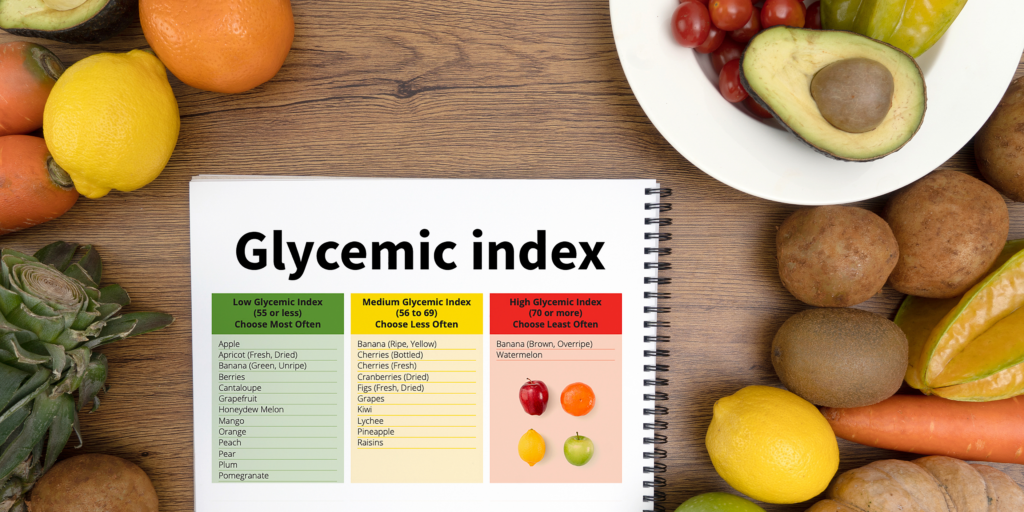When you eat anything, be it a salad or a pound of cake, your blood sugar rises as the carbohydrates in the food is converted into glucose. Now, how much the blood sugar rises is totally dependent on the type of food you eat! This is where the glycemic index (GI) of foods comes in.

“Healthier carbs”, or low GI carbs, are digested and absorbed much slower leading to a slow and steady rise in your blood sugar. “Non-healthy” carbs, or high GI carbs, are digested very quickly, leading to a large spike in your blood sugar.
So, what happens when you eat high GI carbs all the time? Why is it so bad for you and why does it cause you to gain weight? The blood sugar spikes resulting from consumption of high GI carbs lead to your body producing extra insulin in order to regulate the blood glucose levels again. This extra insulin signals the cells to take up the glucose for energy rapidly, which is why you feel energetic for a short while after eating sugary food – the infamous “sugar high”. However, because of the rapid usage of the glucose, your body experiences a sharp fall in blood glucose levels. This activates a hunger response and you feel hungry and tired, leading to cravings. So, keep in mind that when you eat high GI carbs like cakes and French fries, you feel full and satisfied and energetic, but it is very short lived, and soon you’ll feel hungry and lethargic again, which leads to a craving and snacking cycle – as shown in the image below.

As such, management of this cycle (large spikes and drops in blood sugar) is critical to maintaining a healthy metabolism. One of the main benefits of eating foods with a lower GI is that it helps you to cut cravings and urges by limiting spikes in your blood, which ultimately leads to fat storage and weight gain and in the long term, metabolic diseases. This is the premise for many low carb diets.
Another reason to cut down on those high GI carbs is that consistently elevated levels of blood sugar will also trigger the body to store the excess glucose, usually as fat in the so-called problem areas of your body – the arms, hips, thighs and around the belly. So, eating lower GI foods that digest slower will release glucose into your body at a slower rate, allowing your body to use that energy instead of storing it. Carbohydrates are one of the three main macronutrients, and are an important part of any balanced diet. However, as we have explained, not all carbs are made the same. Try to ensure that the carbs you include in your diet are the healthy, high GI kind!


